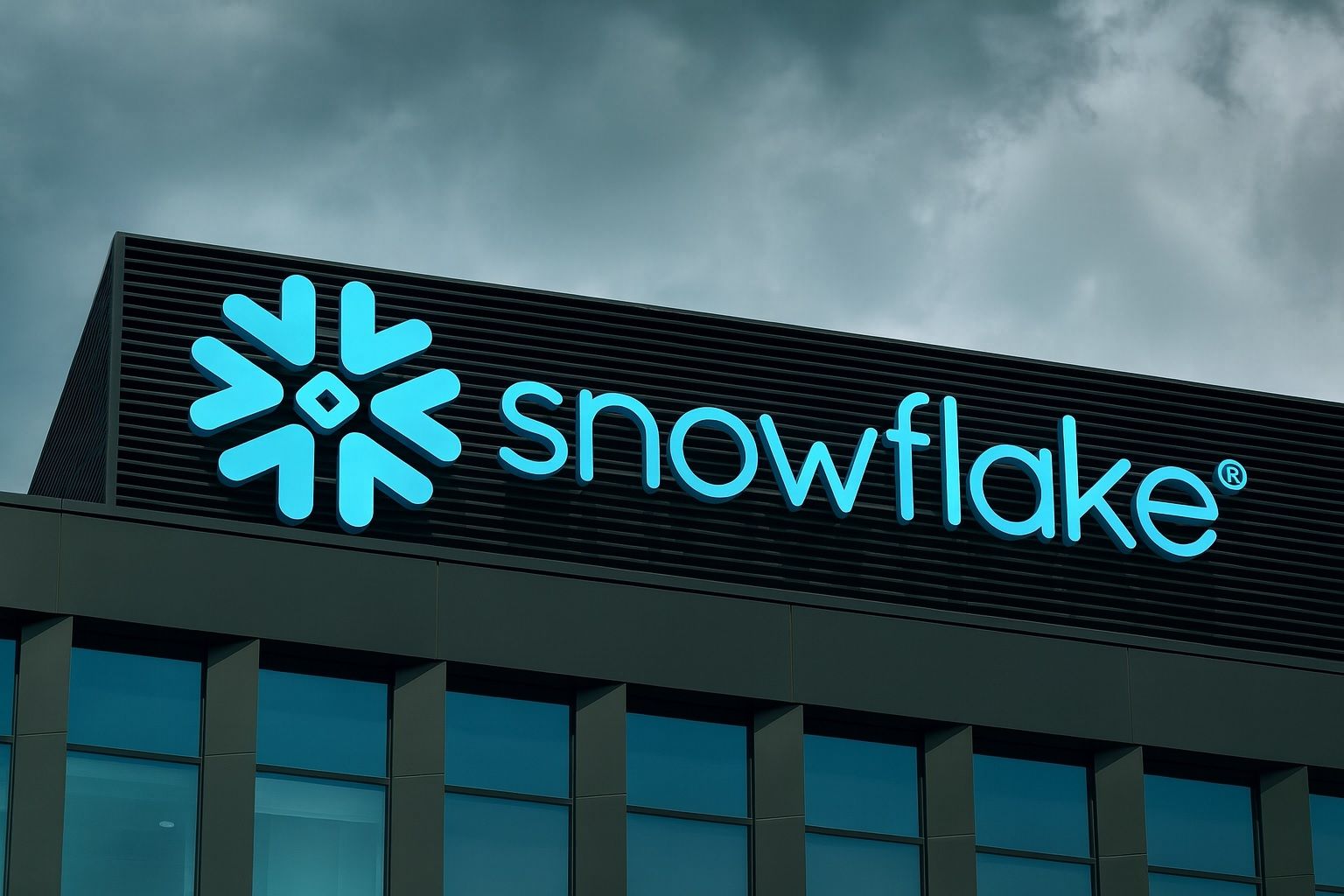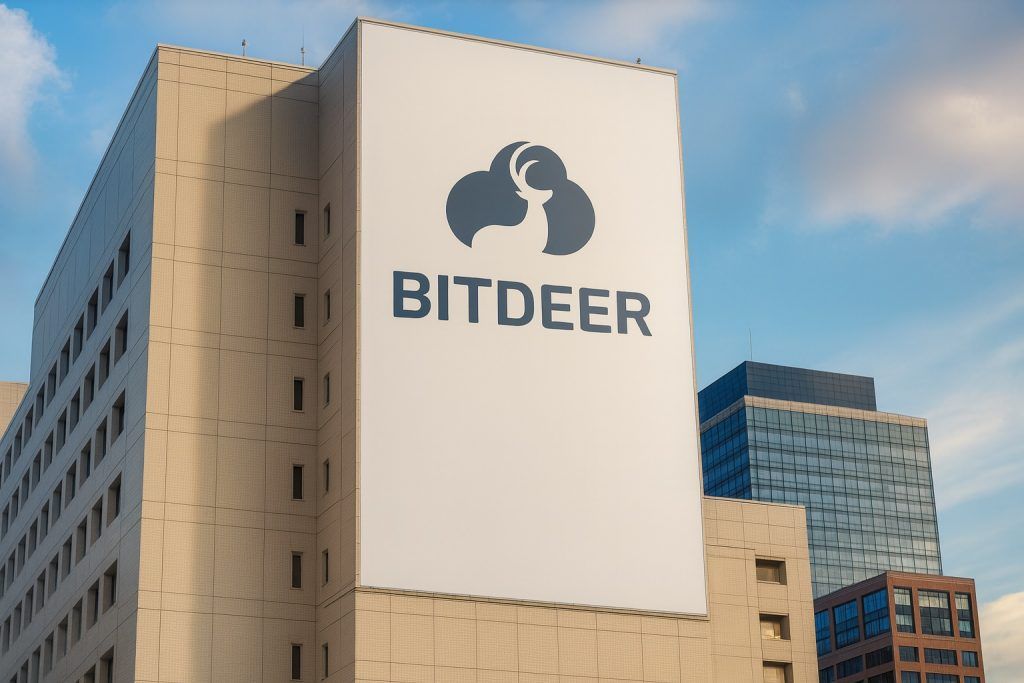- Soaring Stock: Snowflake Inc. (NYSE: SNOW) recently hit a 52-week high near $250 per share, roughly double its price from a year ago [1] [2]. As of Oct. 15, SNOW closed around $240.86 (~$81.6 B market cap) after an AI-fueled rally [3]. The stock jumped 5–6% pre-market on Oct. 16 upon announcing a new partnership with Palantir [4] [5], underscoring investor enthusiasm for Snowflake’s AI initiatives.
- New AI Partnership:Snowflake and Palantir unveiled a strategic tie-up integrating Snowflake’s “AI Data Cloud” with Palantir’s Foundry platform [6]. The deal enables seamless data sharing and “bidirectional, zero-copy” interoperability between the two systems, aimed at accelerating enterprise AI applications [7]. Early adopter Eaton Corp. is already using the integrated solution to streamline data pipelines and AI workflows [8]. Snowflake’s Chief Revenue Officer called the partnership “a natural fit” to reduce friction for customers, and Palantir execs say this first-class integration means “our customers win” [9].
- Analysts Overwhelmingly Bullish: Wall Street is pounding the table on SNOW. Roughly 80%+ of 45 tracked analysts rate Snowflake a “Buy” or “Strong Buy”, yielding an average rating 1.47 (between Buy and Strong Buy) [10]. Over 36 analysts have buy-equivalent ratings vs. just 3 holds and 3 sells [11] [12]. The consensus price target sits around $255–260, implying modest upside [13] [14]. Many firms hiked targets after Snowflake’s latest earnings beat – e.g. UBS to $310 (Oct. 8), Piper Sandler to $285, Morgan Stanley to $272, and others in the high-$200s [15] [16]. “Investors are increasingly searching for opportunities where AI is making a real difference,” notes Ben Barringer of Quilter Cheviot, who views Snowflake as a prime AI beneficiary [17]. Another tech investor called Snowflake “a key beneficiary of the AI and cloud migration trend” fueling enterprise spending [18].
- Red-Hot Growth (and Revenue Beat): Snowflake’s Q2 FY2026 (Jul quarter) blew past expectations with revenue of $1.14 B (up ~32% YoY) vs. $1.09 B expected [19]. Product revenue rose 32% YoY and adjusted EPS of $0.35 beat consensus by $0.08 [20] [21]. It was a classic “beat-and-raise”: management upped full-year guidance to ~$4.4 B product revenue (from ~$4.33 B) on strong demand [22] [23]. This is Snowflake’s 6th straight quarter topping estimates, driven by heavy enterprise adoption of its Data Cloud and associated AI/analytics services. “Better sales execution and new product momentum” are propelling results even in a cloudy macro environment, according to Barclays analysts [24]. Street forecasts still peg ~25% annual growth going forward [25] – a slower pace than prior years, but solid for a company already at $1B+ quarterly revenue.
- Valuation Lofty, Insiders Taking Profits: The flip side of Snowflake’s growth story is a sky-high valuation. At ~$245/share, SNOW trades at ~142× forward earnings and about 15–20× forward sales, towering over most software peers [26]. This rich pricing reflects big growth expectations but “leaves little room for error” if momentum fades [27]. Notably, insiders have sold over 1.1 million shares in the past 90 days [28]. CEO-turned-Chairman Frank Slootman unloaded ~710K shares in late August, and Director Michael Speiser sold ~$11.2 M worth in early October – which triggered a brief ~3% dip in SNOW’s price [29]. Several other executives (CFOs, SVPs) trimmed holdings in September [30] [31]. Such insider selling, alongside one fund manager trimming their stake at these highs [32], signals some insiders believe Snowflake’s near-term upside may be capped after the huge rally. “It may be prudent to be a little cautious with the Buy-equivalent [ratings],” warns Zacks Investment Research, which currently assigns Snowflake a more neutral Hold ranking despite the bullish analyst consensus [33].
Snowflake’s Stock Skyrockets on AI Hype
Snowflake’s shares have been on a tear through 2025, nearly doubling year-over-year while the S&P 500 returned ~16% [34]. The rally hit a crescendo on October 8, 2025, when SNOW spiked to about $250 – a new 52-week high – after UBS analysts issued an extremely bullish $310 target and Buy rating [35]. The stock closed that day around $247 (up ~5% in one session) [36]. By early October, Snowflake was up ~30% year-to-date and 100%+ vs. last October, far outperforming the broader tech market [37]. This surge has been fueled by a confluence of factors: consistently strong earnings, Wall Street’s AI enthusiasm, and Snowflake’s own moves to position itself at the center of the enterprise AI boom.
Even a bit of profit-taking hasn’t derailed the uptrend. When an insider sale by Director Speiser hit the tape on Oct. 3, SNOW dipped ~3% intraday – but quickly rebounded as dip-buyers stepped in [38]. The mild reaction was seen as a sign of “underlying bullish sentiment” in the stock [39]. Technically, Snowflake had been trading well above its moving averages (e.g. 50-day MA near $219, 200-day ~$197) during the early October rally [40]. Some traders warned the stock was “extended” in the short run [41], yet momentum stayed strong. The question was whether SNOW would consolidate around the mid-$240s or continue ripping higher toward analysts’ lofty targets.
New Palantir Partnership Fuels the AI Narrative
Snowflake added more fuel to the fire on Oct. 16, 2025, announcing a high-profile partnership with Palantir Technologies (PLTR) to integrate their platforms for enterprise AI. The news sent Snowflake’s stock up about 5–6% in pre-market trading and grabbed headlines across Wall Street [42] [43]. Under the deal, Snowflake’s core data warehousing platform (dubbed the “AI Data Cloud”) will directly connect with Palantir’s Foundry analytics platform. The integration enables customers to build unified data pipelines and deploy AI/ML models across Snowflake and Palantir seamlessly, with “bidirectional, zero-copy interoperability” between the two environments [44]. In plain English, enterprise clients can feed data back-and-forth between Snowflake and Palantir without cumbersome exports or duplication.
This collaboration is aimed at joint customers in both the commercial and government sectors that use Snowflake for data storage/processing and Palantir for advanced analytics. Eaton (a global manufacturing giant) was cited as an early adopter leveraging the combined Snowflake-Palantir solution to improve things like factory operations and supply chain AI models [45]. Eaton’s Chief Data Officer explained that native integration of his two data platforms “eliminate[s] tedious data movement tasks” and lets the company focus on delivering AI-driven outcomes (from smarter pricing and digital twins to predictive maintenance) [46].
Snowflake’s management is clearly leaning into the AI megatrend. Earlier this month, the company rolled out Snowflake Cortex AI, a suite of tools that allows customers to build generative AI applications within Snowflake’s Data Cloud [47]. They’ve also partnered with NVIDIA to bring GPU-accelerated AI development into Snowflake, essentially aiming to create an “AI factory” for enterprises [48]. CEO Frank Slootman (and new CEO Christian Kleinerman, who took the helm mid-2025) have repeatedly emphasized that Snowflake is “not just a data warehouse, but an AI data platform” for the future. Slootman even downplayed chatter of an AI bubble, saying the hype will inevitably shake out: “The stock market will settle itself” based on real fundamentals in the long run (i.e. Snowflake must execute to justify its valuation) [49].
The Palantir alliance bolsters Snowflake’s narrative as a critical data backbone for AI. It also helps counter a key rival: Databricks. Palantir’s Foundry competes somewhat with Databricks’ Lakehouse platform in enabling AI/analytics on large datasets. Notably, Databricks (still private) was valued at a staggering ~$100 B in 2025 [50], highlighting investor appetite for data/AI platforms. By teaming up with Palantir, Snowflake is effectively forging an ecosystem to challenge Databricks’ momentum in AI. This move could attract more big clients looking for an end-to-end data+AI solution, and it showcases Snowflake’s strategy of partnerships (with Palantir, NVIDIA, the cloud giants, etc.) to augment its own capabilities [51] [52].
Wall Street Cheers Snowflake’s Growth Trajectory
Sell-side analysts have been extraordinarily bullish on Snowflake throughout its 2025 run. After the company’s blowout Q2 earnings in August, at least 24 analysts raised their price targets and over a dozen reiterated or upgraded to Buy [53]. The stock is universally seen as a top beneficiary of surging enterprise cloud and AI spending. It currently carries an average rating firmly in Buy territory, with 35 out of 45 analysts recommending “Buy” or “Strong Buy” [54] [55]. According to MarketBeat data, Snowflake’s consensus rating is Moderate Buy and the average target price is ~$256 (about 6% above the latest trading price) [56]. Price objectives range from roughly $240 on the low end to $310 at the high end [57] [58], showing that even the most conservative analysts think SNOW is fairly valued at worst after its run-up.
Many analysts justify their optimism by pointing to Snowflake’s exceptional growth metrics and its central role in the data/AI ecosystem. The company has sustained 30%+ revenue growth even at a ~$4 billion annual revenue scale [59], with net revenue retention ~125% (meaning existing customers keep expanding usage by ~25% annually) – a testament to its “land-and-expand” model [60] [61]. “Snowflake is empowering enterprises to achieve full potential through data and AI,” management frequently touts, and analysts largely agree [62]. Janus Henderson portfolio manager Richard Clode observes that Snowflake is “a key beneficiary of the AI and cloud migration trend,” enabling clients to glean real value from their data [63]. In other words, Snowflake sits at the intersection of two powerful IT spending drivers (cloud adoption and AI/ML), which is a big reason fund managers have piled in – institutional investors own roughly 65–70% of Snowflake’s float [64] [65].
Another tailwind: improving profitability metrics. While Snowflake is still reporting net losses on a GAAP basis, its margins are trending in the right direction. In Q2 it delivered a 35% adjusted operating margin and positive free cash flow, and it’s on track to break even on adjusted EPS for the full year (excluding stock comp) [66] [67]. Gross margin remains a healthy ~66% [68]. As Snowflake’s growth moderates from hypergrowth to merely high growth, operating leverage is kicking in – a factor bulls cite to argue the current rich valuation will ease over time. “We’re seeing margin expansion, which is a positive indicator for future profitability,” noted one GuruFocus analysis, even as net margins are still negative [69] [70]. Wall Street expects Snowflake to eventually turn the corner to GAAP profitability by FY2027, and every quarter of margin improvement builds confidence in that timeline.
All told, the Street’s tone on Snowflake is optimistic: the company is executing well, expanding its platform (into AI services, app development, data sharing), and continues to beat expectations – thus deserving a premium. That said, virtually every analyst also acknowledges one big caveat: valuation.
Frothy Valuation Meets Insider Selling – A Reason for Caution?
Even true believers concede that Snowflake’s stock price reflects very high expectations. At ~$240–250/share, Snowflake trades at ~20× forward sales and a mind-bending 140× forward earnings (on an adjusted basis) [71]. For context, that earnings multiple is 2×–3× higher than other high-growth software names (e.g. MongoDB at ~76×, Datadog ~64×) [72]. Its price-to-sales near 19× is at the top of its historical range [73] and implies investors are valuing Snowflake like a company that will dominate its industry with long-term growth far above average. The stock’s price-to-book ratio ~34 is also near a peak, reflecting lofty investor sentiment [74]. Simply put, perfection is priced in. “Snowflake trades at a premium even by high-growth tech standards… underscoring tremendous optimism around its growth, but leaving little room for error,” as one analysis aptly noted [75].
This high bar is part of why some insiders and early investors have been cashing out. In addition to high-profile sales by Snowflake’s co-founder/CEO-turned-chairman and board members, regulatory filings show a string of smaller insider sales in recent months [76] [77]. According to GuruFocus, there were 27 insider sell transactions in the past quarter alone [78]. While insiders may sell for many reasons, the volume of sales suggests that those closest to the company are taking some risk off the table after the stock’s 100% run-up. It’s worth noting that Snowflake’s insider ownership is relatively low (under 1%) post-IPO [79], so these sales aren’t likely to impact control, but they do grab attention.
Additionally, at least one notable institutional investor has trimmed their position. Artisan Partners, a respected mid-cap growth fund, revealed that it reduced its Snowflake stake in Q3 2025, citing the stock’s strong rally and valuation as factors (Snowflake’s market cap was ~$81 B at the time of Artisan’s decision) [80]. Such moves hint that even bullish investors are locking in some gains and reassessing how much upside is left in the near term.
Another point of caution is competition and the evolving tech landscape. Snowflake operates in a hotly contested arena – not just against fellow independent data platforms like Databricks, but also against cloud titans’ native offerings (Amazon AWS’s Redshift, Google BigQuery, Microsoft’s Synapse) [81]. These giants, which also happen to be Snowflake’s partners, are investing heavily to improve their own data cloud services. If, for instance, AWS or Azure offers steep discounts or tighter integration to lure customers back to their in-house databases, Snowflake could feel pressure [82]. Moreover, as the economy fluctuates, companies may seek to optimize cloud costs, and Snowflake’s usage-based model means it’s not immune to clients throttling back usage in a downturn (as happened in 2023). Any signs of growth deceleration could spur a sharp correction in a stock priced for perfection.
Lastly, the broader market’s fickleness toward tech plays a role. In late 2025, interest rates remain elevated and investors have intermittently rotated out of high-multiple tech stocks on macro worries. Snowflake’s beta ~1.2–1.5 indicates it’s more volatile than the market [83] [84]. Should risk appetite sour, SNOW could be hit harder than most. This vulnerability was highlighted by Zacks’ quantitative model, which currently rates Snowflake a Zacks Rank #3 (Hold) – not because the company isn’t executing, but because earnings estimate revisions have stalled out (the consensus FY2025 EPS estimate has not budged in the last month) [85] [86]. In other words, the stock’s fundamentals need to “catch up” to its price. As Zacks analysts put it, relying solely on Wall Street ratings, “which skew positive, might not be a good idea” – it’s wise to also consider objective metrics and the risk-reward tradeoff at these valuations [87] [88].
Outlook: Can Snowflake Keep Up the Momentum?
Going forward, Snowflake faces the classic high-growth dilemma: Can it justify the hype? The company’s next big test will be its Q3 FY2026 earnings report due in late November 2025. Investors will be watching if Snowflake can sustain ~30% growth and whether management will raise guidance again for the full year. Any slowdown or cautious outlook could jolt the stock, given its elevated valuation. On the other hand, another beat-and-raise would reinforce the bull case that Snowflake is still in the early innings of monetizing its Data Cloud.
Bulls argue that Snowflake’s total addressable market is enormous and expanding. As data creation explodes and AI adoption accelerates, enterprises will need centralized, scalable platforms like Snowflake more than ever. New product launches (e.g. expanded Snowflake Cortex AI capabilities, Python support via Snowpark) and big partnerships (like the Palantir deal) can open fresh revenue streams [89] [90]. If Snowflake continues to execute flawlessly – adding major customers, expanding wallet share, and perhaps even making accretive acquisitions in AI/analytics – some analysts see the stock pushing into the $300+ range over the next year [91]. The most optimistic forecasts (e.g. UBS’s $310 target) imply Snowflake will grow into its valuation as a dominant de facto data cloud standard.
Bears, however, point out that valuation risk is real and unforgiving. At 140× earnings and nearly 20× sales, even a minor stumble could trigger a big pullback [92]. Any sign of rising competition or customers slowing their consumption would likely hit SNOW hard. The hefty insider selling is a yellow flag, and the stock’s high beta means if the tech sector hits turbulence, Snowflake could fall faster than peers. Detractors also note that cloud titans are frenemies – Snowflake’s success actually boosts AWS/Azure/GCP usage (since Snowflake runs on those clouds) [93], but if budgets tighten, those same providers might fight harder on price to keep data workloads in-house. In short, Snowflake must continuously prove it deserves its premium status.
For now, sentiment remains largely buoyant. The stock’s roughly 2% dip on Oct. 14 (to ~$241) [94] [95], following its run to highs, showed that investors are not panicking at these levels – rather, there’s a healthy two-way market forming. The new AI partnership with Palantir has only added to the long-term story, giving bulls more to chew on. “Moderation in expectations might be wise, but the opportunity is enormous,” as one analyst essentially summarized. Snowflake sits at the nexus of powerful trends, and it has so far executed exceptionally well on its vision of a unified, cloud-agnostic data platform. The coming months will reveal whether that vision can justify the stock’s sky-high price. As Snowflake’s CEO aptly suggested, hype alone won’t carry the day – the market will ultimately “settle itself” based on Snowflake’s ability to deliver real value [96]. Investors should buckle up for an interesting ride into 2026, with Snowflake squarely in the Wall Street spotlight.
Sources: Snowflake company filings and press releases; GuruFocus and MarketBeat instant alerts; Reuters and Yahoo Finance reporting; ts2.tech analysis and expert commentary [97] [98] [99] [100]. All data current as of Oct. 16, 2025.
References
1. ts2.tech, 2. finance.yahoo.com, 3. finance.yahoo.com, 4. za.investing.com, 5. www.gurufocus.com, 6. za.investing.com, 7. za.investing.com, 8. za.investing.com, 9. za.investing.com, 10. www.nasdaq.com, 11. www.marketbeat.com, 12. www.marketbeat.com, 13. www.marketbeat.com, 14. www.marketbeat.com, 15. ts2.tech, 16. www.marketbeat.com, 17. ts2.tech, 18. ts2.tech, 19. ts2.tech, 20. ts2.tech, 21. www.marketbeat.com, 22. ts2.tech, 23. ts2.tech, 24. ts2.tech, 25. ts2.tech, 26. ts2.tech, 27. ts2.tech, 28. www.marketbeat.com, 29. ts2.tech, 30. www.marketbeat.com, 31. www.marketbeat.com, 32. finance.yahoo.com, 33. www.nasdaq.com, 34. finance.yahoo.com, 35. ts2.tech, 36. ts2.tech, 37. ts2.tech, 38. ts2.tech, 39. ts2.tech, 40. ts2.tech, 41. ts2.tech, 42. www.gurufocus.com, 43. za.investing.com, 44. za.investing.com, 45. za.investing.com, 46. za.investing.com, 47. ts2.tech, 48. ts2.tech, 49. ts2.tech, 50. ts2.tech, 51. ts2.tech, 52. ts2.tech, 53. ts2.tech, 54. www.nasdaq.com, 55. www.marketbeat.com, 56. www.marketbeat.com, 57. www.marketbeat.com, 58. ts2.tech, 59. ts2.tech, 60. ts2.tech, 61. ts2.tech, 62. ts2.tech, 63. ts2.tech, 64. ts2.tech, 65. www.gurufocus.com, 66. www.marketbeat.com, 67. www.marketbeat.com, 68. www.gurufocus.com, 69. www.gurufocus.com, 70. www.gurufocus.com, 71. ts2.tech, 72. ts2.tech, 73. www.gurufocus.com, 74. www.gurufocus.com, 75. ts2.tech, 76. www.marketbeat.com, 77. www.marketbeat.com, 78. www.gurufocus.com, 79. www.gurufocus.com, 80. finance.yahoo.com, 81. ts2.tech, 82. ts2.tech, 83. www.marketbeat.com, 84. www.gurufocus.com, 85. www.nasdaq.com, 86. www.nasdaq.com, 87. www.nasdaq.com, 88. www.nasdaq.com, 89. ts2.tech, 90. za.investing.com, 91. ts2.tech, 92. ts2.tech, 93. ts2.tech, 94. www.marketbeat.com, 95. www.marketbeat.com, 96. ts2.tech, 97. ts2.tech, 98. www.marketbeat.com, 99. za.investing.com, 100. ts2.tech










